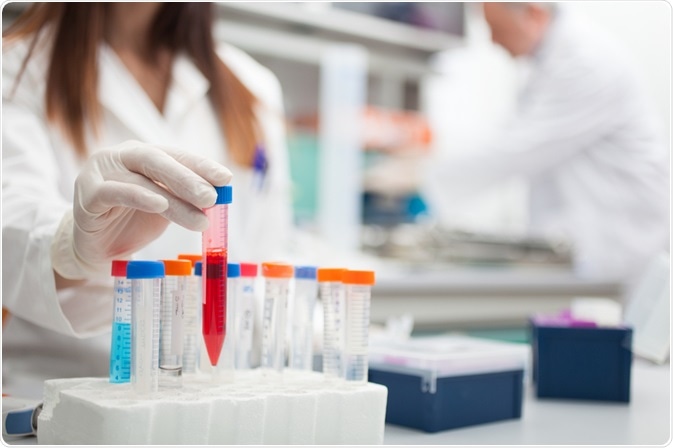During the preclinical testing process of developing a compound to medicine, the compound in question must go through phases of testing. First, a potential target to treat a disease needs to be identified. Then multiple compounds are screened and any which show potential as a medicine to treat the disease need to undergo toxicity testing prior to clinical testing to reduce the potential for harm.
 Image Credit: Minerva Studio / Shutterstock.com
Image Credit: Minerva Studio / Shutterstock.com
What are the basics of preclinical testing?
According to the US Food and Drug Administration (FDA), before a new medicinal drug is approved for use, a series of tests need to be carried out. In the first phase, basic research identifies hypothetical targets to treat a certain disease and then small molecules or biological compounds are screened to find any which show potential to treat the disease.
This is then followed by the preclinical research phase, during which the potential toxicity of the compound is identified, as stated above. Factors such as dosage, method and frequency of administration are also investigated to support the next phase - the clinical phase, also called clinical research. Here, the compound is tested in people to see if it can be used to treat the disease which initiated the search.
Identifying potential targets
Failure of compounds to be used as drugs is mainly due to either the compound not functioning as a drug, or being toxic. Therefore, identifying drug targets is one of the most important parts of preclinical testing. Recent advances in technology have increased the number of potential targets that could potentially be used. Bioinformatic tools are now available to “mine” the available data to search for these potential targets; these could be from published research or patents, gene expression and proteomics datasets, data on transgenic phenotypes, and compound profiling data.
Targets consist of a broad range of biological molecules such as proteins, RNA and DNA. One crucial requirement for a biological molecule to be considered as a target is whether it is “druggable”; this means that compounds being tested needs to be able to access the target and then induce a measurable response.
Certain classes of targets are more suited to different classes of compounds. For example, G-protein coupled receptors are good potential targets for small molecules, while antibodies are better suited for blocking protein-protein interactions.
How do you discover “hits”?
Once the target for treatment is identified, the next stage of preclinical testing is to identify “hits”. These are compounds that act in a way that could treat the disease in question. Here, different kinds of assays are used.
In high-throughput screens, a large set of compounds are tested with the target to see if any show potential to be taken to the next phase. These rely on an automated system that is able to test a large number of compounds but does not make any assumptions about how these compounds could potentially interact with the target. In contrast, focused screening tests a smaller number of compounds, but those which are more likely to act with the target. Other screening methods used in this phase of preclinical testing include fragment screening, where a protein structure of the compound-target interaction is determined, and physiological screening, where tissues are used rather than just the target or cells.
What happens once hits are identified?
Once hits are identified, these are then investigated further so that the compounds become more selective and effective. This phase of preclinical testing investigates the structure-activity relationship between the compound and target, then looks at whether the compounds act with the target from a different species.
This shows whether the compounds could be tested in an animal model of the disease in question, which is a vital part of toxicity testing during preclinical testing. The compounds are then refined so that the beneficial properties are kept while the less favorable aspects are reduced or ideally removed.
What are some other considerations needed for preclinical testing?
Other factors which should be considered during preclinical testing are the nature of the disease and the demographics of the patients who develop it.
For example, neurodegenerative diseases such as Alzheimer’s are progressive, so treatment needs to be long-term. This means that during preclinical testing it is vital that compounds are tested in such a way that long-term treatment mimicked. This highlights any compounds that may become toxic after long-term exposure.
As neurodegenerative diseases tend to affect elderly people more, investigating potential reproductive toxicity can be done later on during preclinical testing. However, as these patients are also likely to be taking other medication, it may be prudent to test for any interactions between the compounds and approved medicines early on in preclinical testing.
Route and frequency of administration is something that also needs to be considered with the patient demographics; in neurodegenerative diseases, for example, patients would benefit more from treatment that is easier to administer, such as small tablets or liquids that are taken once a day or less. Focusing on compounds that could be administered in this way is something that could be the focus of preclinical testing.
Further Reading
Last Updated: Aug 23, 2023